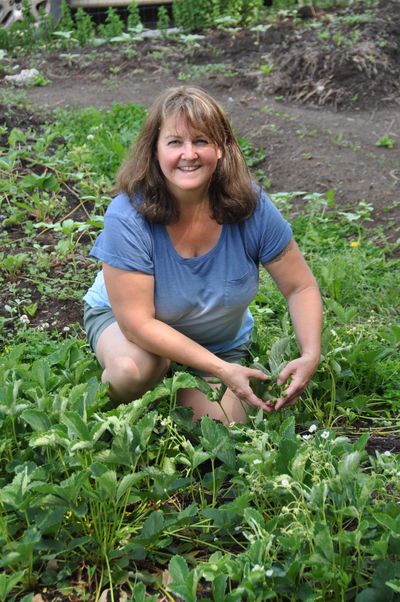Gardening: Small space needs alternate garden, Pat Munts says

Like many of us, WSU Master Gardener Mia Marcum-McCoy is always looking for new ways to enjoy her garden and stretch her knowledge. A recent transplant to the South Perry neighborhood from the Seattle area, she has been experimenting with all kinds of what she calls “alternative forms of gardening.”
“I took training in permaculture and biodynamics and that got me to think differently about how I can grow food,” Marcum-McCoy said.
Along the way, she learned about companion and succession planting, raised beds, square-foot gardening, creating gardens in straw bales and growing vertical gardens to save space. Now she wants to share what she has learned with others.
On Saturday, she will share her experiences, tips and tricks as part of the A Day at Manito Park Lecture Series at the Meeting Room in Manito Park. The free talk will begin at 10 a.m.
As part of her gardening adventure, Marcum-McCoy converted her front yard into a diverse garden that supplies her with strawberries, raspberries, sunflowers, salad greens and a rotating selection of vegetables through the season. Her herb garden is of special importance because she grows a wide variety of herbs for teas and herbal medicine.
“I love to take my French press into the herb garden and pick fresh herbs and put them straight into the hot water to infuse,” she said as we sipped her freshly made dandelion infused coffee.
Her talk will cover how to create food gardens even if you don’t have a patch of dirt to grow in. Dirt bag gardening involves using a large bag of potting mix, cutting holes and planting directly into it.
Square-foot gardening is a technique that allows dense planting in a small amount of garden space, which is perfect for small yards or even patio boxes.
In straw bale gardening, the gardener ties several bales of straw (not hay) together on edge and then cuts a planting bed in the top. This type of planting is great for greens and small vegetables. The bales are soaked with water so they stay moist and keep the plants well watered.
She will also talk about lasagna gardening. This technique is also called sheet composting and involves layering any kind of organic material about a foot deep over a piece of ground and letting it rot down for six months or a year. After the pile has processed, the rich compost can be planted with vegetables, flowers or fruit plants. Almost anything can be used including grass clippings, leaves, kitchen scraps, wet newspaper or white paper, even old wool carpet to make the pile. Best of all, there is no turning the pile.
Vertical gardening techniques take advantage of walls and fences in otherwise tight planting spaces. Vegetables such as tomatoes, squash, cucumbers, beans and peas can be trained to grow up vertical surfaces. Planting pockets made of gutters, flower boxes and fabric can be hung on vertical walls and planted rather than taking up ground space.
Pat Munts has gardened in the Spokane Valley for over 35 years. She is co-author of “Northwest Gardener’s Handbook” with Susan Mulvihill. She can be reached at pat@
inlandnwgardening.com.